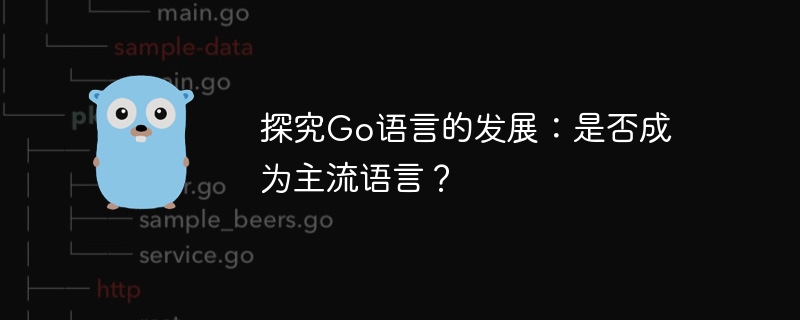

As an open source, statically typed programming language, Go language was developed by Google and first released in 2007. It has attracted the attention of developers since its inception. Its design goal is to increase programmer productivity, especially for building large, high-performance systems. Over the past few years, Go's influence and recognition in the world of software development has gradually increased, but the question still remains: will it become a mainstream programming language?
1. Features of Go language
Sample code:
package main
import "fmt"
func count(c chan int) {
for i := 0; i < 5; i++ {
c <- i
}
close(c)
}
func main() {
c := make(chan int)
go count(c)
for i := range c {
fmt.Println(i)
}
}Sample code:
package main
import (
"testing"
)
func Add(x, y int) int {
return x + y
}
func TestAdd(t *testing.T) {
if Add(1, 2) != 3 {
t.Error("1+2 should be 3")
}
}Sample code:
# 编译为可执行文件 go build main.go # 运行程序 ./main
2. Development status of Go language
3. Limitations of Go language
In general, Go language, as an emerging programming language, has achieved considerable success in the development process, but there is still a certain way to go before it can become a mainstream language. Developers need to work together to continuously improve the language and ecology to make it more powerful and popular.
I hope that through the exploration of this article, readers can have a clearer understanding of the current development status of the Go language and understand its potential and prospects in the field of programming. I hope that the Go language will continue to improve and become one of the first choices for more developers.
The above is the detailed content of Explore the development of Go language: Has it become a mainstream language?. For more information, please follow other related articles on the PHP Chinese website!
 Usage of Type keyword in Go
Usage of Type keyword in Go
 How to implement linked list in go
How to implement linked list in go
 What are the Go language programming software?
What are the Go language programming software?
 How to learn go language from 0 basics
How to learn go language from 0 basics
 What are the methods to implement operator overloading in Go language?
What are the methods to implement operator overloading in Go language?
 What are the operators in Go language?
What are the operators in Go language?
 What should I do if I forget my broadband password?
What should I do if I forget my broadband password?
 OGG common commands
OGG common commands




